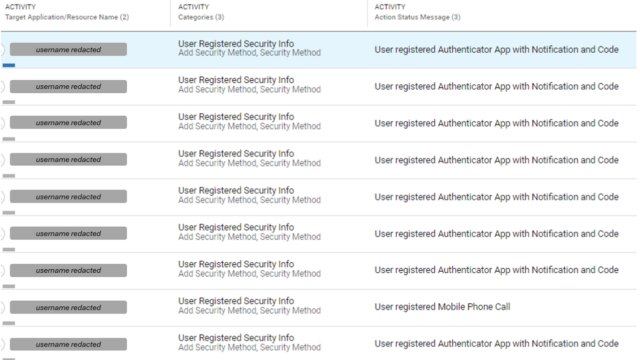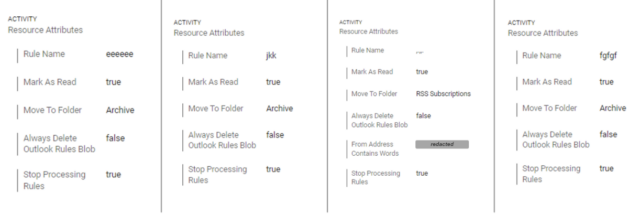- The Growing Threat of AI-powered Cyberattacks in 2025
- I test tablets for a living and this is the Samsung tablet I recommend the most
- The Cost of Ignoring Patches: How State and Local Governments Can Mitigate Damaging Security Breaches
- I turned this 98-inch TV into an immersive at-home theater system (and it's $1,500 off)
- You can save $30 on the Apple Pencil Pro right now
Ongoing campaign compromises senior execs’ Azure accounts, locks them using MFA

Getty Images
Hundreds of Microsoft Azure accounts, some belonging to senior executives, are being targeted by unknown attackers in an ongoing campaign that’s aiming to steal sensitive data and financial assets from dozens of organizations, researchers with security firm Proofpoint said Monday.
The campaign attempts to compromise targeted Azure environments by sending account owners emails that integrate techniques for credential phishing and account takeovers. The threat actors are doing so by combining individualized phishing lures with shared documents. Some of the documents embed links that, when clicked, redirect users to a phishing webpage. The wide breadth of roles targeted indicates the threat actors’ strategy of compromising accounts with access to various resources and responsibilities across affected organizations.
“Threat actors seemingly direct their focus toward a wide range of individuals holding diverse titles across different organizations, impacting hundreds of users globally,” a Proofpoint advisory stated. “The affected user base encompasses a wide spectrum of positions, with frequent targets including Sales Directors, Account Managers, and Finance Managers. Individuals holding executive positions such as “Vice President, Operations,” “Chief Financial Officer & Treasurer,” and “President & CEO” were also among those targeted.”
Once accounts are compromised, the threat actors secure them by enrolling them in various forms of multifactor authentication. This can make it harder for victims to change passwords or access dashboards to examine recent logins. In some cases, the MFA used relies on one-time passwords sent by text messages or phone calls. In most instances, however, the attackers employ an authenticator app with notifications and code.

Proofpoint
Proofpoint observed other post-compromise actions including:
- Data exfiltration. Attackers access and download sensitive files, including financial assets, internal security protocols, and user credentials.
- Internal and external phishing. Mailbox access is leveraged to conduct lateral movement within impacted organizations and to target specific user accounts with personalized phishing threats.
- Financial fraud. In an effort to perpetrate financial fraud, internal email messages are dispatched to target Human Resources and Financial departments within affected organizations.
- Mailbox rules. Attackers create dedicated obfuscation rules intended to cover their tracks and erase all evidence of malicious activity from victims’ mailboxes.

Proofpoint
The compromises are coming from several proxies that act as intermediaries between the attackers’ originating infrastructure and the accounts being targeted. The proxies help the attackers align the geographical location assigned to the connecting IP address with the region of the target. This helps to bypass various geofencing policies that restrict the number and location of IP addresses that can access the targeted system. The proxy services often change mid-campaign, a strategy that makes it harder for those defending against the attacks to block the IPs where the malicious activities originate.
Other techniques designed to obfuscate the attackers’ operational infrastructure include data hosting services and compromised domains.
“Beyond the use of proxy services, we have seen attackers utilize certain local fixed-line ISPs, potentially exposing their geographical locations,” Monday’s post stated. “Notable among these non-proxy sources are the Russia-based ‘Selena Telecom LLC’, and Nigerian providers ‘Airtel Networks Limited’ and ‘MTN Nigeria Communication Limited.’ While Proofpoint has not currently attributed this campaign to any known threat actor, there is a possibility that Russian and Nigerian attackers may be involved, drawing parallels to previous cloud attacks.”
How to check if you’re a target
There are several telltale signs of targeting. The most helpful one is a specific user agent used during the access phase of the attack: Mozilla/5.0 (X11; Linux x86_64) AppleWebKit/537.36 (KHTML, like Gecko) Chrome/120.0.0.0 Safari/537.36
Attackers predominantly utilize this user-agent to access the ‘OfficeHome’ sign-in application along with unauthorized access to additional native Microsoft365 apps, such as:
- Office365 Shell WCSS-Client (indicative of browser access to Office365 applications)
- Office 365 Exchange Online (indicative of post-compromise mailbox abuse, data exfiltration, and email threats proliferation)
- My Signins (used by attackers for MFA manipulation)
- My Apps
- My Profile
Proofpoint included the following Indicators of compromise:
| Indicator | Type | Description |
| Mozilla/5.0 (X11; Linux x86_64) AppleWebKit/537.36 (KHTML, like Gecko) Chrome/120.0.0.0 Safari/537.36 | User Agent | User Agent involved in attack’s access phase |
| Mozilla/5.0 (Windows NT 10.0; Win64; x64) AppleWebKit/537.36 (KHTML, like Gecko) Chrome/120.0.0.0 Safari/537.36 | User Agent | User Agent involved in attack’s access and post-access phases |
| Mozilla/5.0 (Windows NT 10.0; Win64; x64) AppleWebKit/537.36 (KHTML, like Gecko) Chrome/119.0.0.0 Safari/537.36 | User Agent | User Agent involved in attack’s access and post-access phases |
| sachacel[.]ru | Domain | Domain used for targeted phishing threats |
| lobnya[.]com | Domain | Source domain used as malicious infrastructure |
| makeapp[.]today | Domain | Source domain used as malicious infrastructure |
| alexhost[.]com | Domain | Source domain used as malicious infrastructure |
| mol[.]ru | Domain | Source domain used as malicious infrastructure |
| smartape[.]net | Domain | Source domain used as malicious infrastructure |
| airtel[.]com | Domain | Source domain used as malicious infrastructure |
| mtnonline[.]com | Domain | Source domain used as malicious infrastructure |
| acedatacenter[.]com | Domain | Source domain used as malicious infrastructure |
| Sokolov Dmitry Nikolaevich | ISP | Source ISP used as malicious infrastructure |
| Dom Tehniki Ltd | ISP | Source ISP used as malicious infrastructure |
| Selena Telecom LLC | ISP | Source ISP used as malicious infrastructure |
As the campaign is ongoing, Proofpoint may update the indicators as more become available. The company advised companies to pay close attention to the user agent and source domains of incoming connections to employee accounts. Other helpful defenses are employing security defenses that look for signs of both initial account compromise and post-compromise activities, identifying initial vectors of compromise such as phishing, malware, or impersonation, and putting in place auto-remediation policies to drive out attackers quickly in the event they get in.

